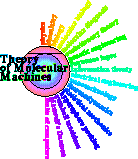Bits and Bases
The idea that DNA can carry 2 bits per base goes back a long way. It was implied by Seeman and Rich's famous paper (1) that the major groove of DNA can support up to 2 bits of sequence conservation, while the minor groove can only support 1 bit, but practical application of this idea to molecular biology only came when it was discovered by Papp et al (2) that Rep A binding sites are strangely anomalous in this regard. More recent experiments by Lyakhov et al (3) confirmed this prediction.(1)
@article{Seeman1976,
author = "N. C. Seeman
and J. M. Rosenberg
and A. Rich",
title = "Sequence-specific recognition of double helical nucleic acids
by proteins",
journal = "Proc. Natl. Acad. Sci. USA",
volume = "73",
pages = "804-808",
year = "1976"}
(2)
@article{Papp.helixrepa,
author = "P. P. Papp
and D. K. Chattoraj
and T. D. Schneider",
title = "Information Analysis of Sequences that Bind
the Replication Initiator {RepA}",
journal = "J. Mol. Biol.",
comment = "Cover of 233, number 2!",
volume = "233",
pages = "219-230",
year = "1993"}
(2)
@article{Lyakhov.Schneider2001,
author = "I. G. Lyakhov
and P. N. Hengen
and D. Rubens
and T. D. Schneider",
title = "{The P1 Phage Replication Protein RepA Contacts an
Otherwise Inaccessible Thymine N3 Proton by
DNA Distortion or Base Flipping}",
journal = "Nucl. Acid Res.",
volume = "29",
number = "23",
pages = "4892-4900",
comment = "repan3",
year = "2001"}
![]()

Schneider Lab
origin:1995 June 23
updated: 2002 May 29
![]()